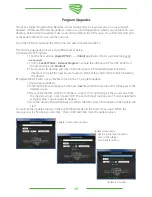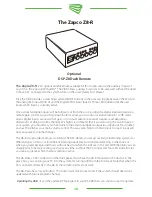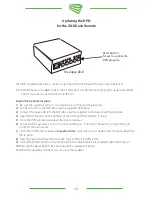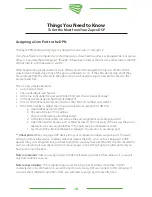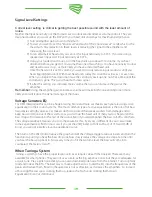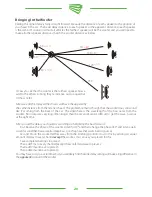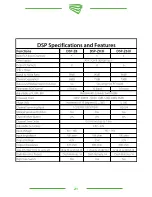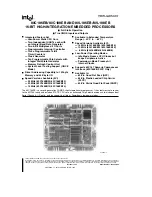
Signal Level Settings
Correct level setting is critical to getting the best possible sound with the least amount of
noise.
Neither the Input Sensitivity nor the Output Level controls are intended as volume controls. They are
designed to allow you to set up the DSP with your head unit and amps for maximum performance.
1) Turn all amplifier gains down to minimum
2) To start you want to set the
“
Main Level”
and each of the “
Channel Levels” to 128
which is the
maximum. Any reduction in these levels is reducing the signal to the amplifiers and
increasing the noise level.
3) For an aftermarket head unit you can set the Input Sensitivity to 3.155. If you are using a
speaker level input start Input Sensitivity at 9.976.
4) Using your loudest loud music, turn the head unit up to about 3/4 volume. If you hear
distortion before you get to 3/4 volume then one of two things. You have Sensitivity too low
and need to raise it up... or more likely you have a distorted head unit.
Once the head unit is at 3/4 volume you want to slowly reduce input sensitivity until you
hear clipping (distortion). With most head units today this could be as low as 1 or even less.
When you begin to hear distortion raise the sensitivity back up one notch at a time until the
distortion is gone. This is you maximum clean signal.
5) If, after this setting you still need more volume then you can increase the gain at the
amplifier.
Remember:
Using the amplifier gain to increase volume will make both noise and distortion more
likely and it will reduce the dynamic range of the music
Voltage Sensitive EQ
For OEM Integration this can be a huge blessing. More and more car makers each year are using active
equalization in their sound systems. The most common type of active equalization is the roll-off of bass
frequencies at high volumes. Car makers do this to protect their weak woofers from damage and to
keep bass distortion out of the system. So as you turn up the head unit of many factory head units the
bass drops off in relation to the rest of the sound. Even if you add amplifiers the bass roll-off is still there.
The voltage sensitive EQ allows you to compensate for this. Every car is different do your car will take
some experimenting. But for most cars if you set the VSEQ band to 30Hz with a Q of 1.50 and 15dB of
boost you will get a pretty close re-equalization curve.
Then turn on the VSEQ button above the graph and set the Voltage trigger at about 6 volts and turn the
head unit up until you hear the bass drop out. Now slowly reduce the voltage one step at a time until
you hear the bass pop back in. Now every time you hit that volume level the bass will come in to
counteract the factory roll-off.
When Tuning a System
Tuning a system to have the proper response in a car requires a Real Time Analyzer. There are many
available for smart phones. They are not as accurate as the big expensive ones but they are adequate for
a quick tune. Play a pink noise disk (you can also download pink noise from the internet. Turn it up fairly
loud and look at the RTA. The best way to make adjustments is to dial the EQ into the frequencies of the
peaks and reduce them. Boosting frequencies is not as effective, as it stresses the amplifiers. So instead
of boosting the low spots to bring them up, reduce the high spots to bring them down.
Equalization Rule:
Cut, don’t Boost
.
19











